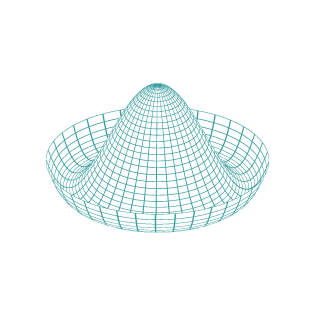They just like having halved oranges twisted on them.
Guessing:
So algae that grows closer to the surface of the water gets more sunlight, which gives it an advantage over other algae.
Then, because the algae casts a shadow, the algae immediately surrounding it gets more shade, giving it a disadvantage.
I have no idea how the math works out, but there’s probably some relation between light and shade that creates this pattern.
I’m sure that plays a role, and we see similar stuff happening in forests where trees compete for sunlight in a similar way.
It’s even more extreme in water, though, because the light closer to the bottom is literally dimmer. In a forest any sunlight that penetrates the foliage will be just as strong as it is in the canopy, but in water it loses strength as it penetrates deeper. That might be what makes the spikes so sharp, whereas surface plants have gentler slopes towards the upper layer of the biosphere.
Indeed, also why most marine life actually happens to be very close to the shore in shallow waters. Most of the ocean is basically a desert as far as life is concerned.




